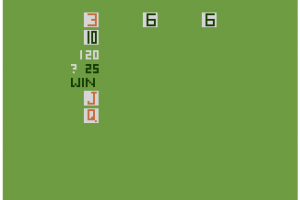I still recall the first time I clicked “Deal” on an online poker table. My heart was racing, palms sweaty, and I had absolutely no idea what I was doing. I’d watched a few movies featuring poker scenes and thought I understood the basics, but within minutes of that first hand, I figured out I was completely out of my depth. That initial $50 deposit vanished faster than I care to admit, but something about the strategic complexity and psychological warfare of poker had me hooked.
What started as casual entertainment evolved into a serious pursuit over the next three years. Through countless hours of study, practice, and yes, significant losses, I transformed from that nervous beginner into a consistently profitable player. It wasn’t a walk in the park—I had to get my head around some serious math, psychology, and strategy that went way beyond what I initially thought.
In this article, I’ll share the three fundamental pillars that elevated my game from amateur to professional level: getting the hang of bluffing, understanding poker odds with mathematical precision, and reading opponents through their tells. These aren’t just theoretical concepts—they’re battle-tested strategies that have directly contributed to my success at the virtual felt. Whether you’re just starting your poker journey or looking to break through to the next level, these insights will provide you with the foundation needed to compete with confidence and consistency.
Getting the Hang of Bluffing
My First Bluffing Disasters
My early bluffing attempts were complete disasters. It’s still clear in my mind—one particular hand where I tried to represent a flush on a board showing three hearts. I bet aggressively on the river, convinced my opponent would fold, only to be called by someone holding the actual nuts. That moment taught me bluffing isn’t about acting—it’s about storytelling with mathematical backing.
I learned my priciest lesson in my second month of playing. I’d been bluffing too frequently, thinking aggression alone would win pots. After losing nearly $200 in a single session due to poorly timed bluffs, it dawned on me that I needed to understand the fundamental principles behind successful deception.
The Science Behind Successful Bluffs
Effective bluffing operates on three core principles that I’ve refined through thousands of hands. First, frequency matters more than timing. Your bluffs must occur often enough to keep opponents guessing but infrequently enough to maintain credibility. I typically aim for a bluff-to-value ratio of approximately 1:2 in most situations, meaning for every two strong hands I bet for value, I’ll execute one well-planned bluff.
Second, board texture determines bluff selection. Dry boards like A-7-2 rainbow are excellent for continuation betting bluffs because they hit the pre-flop aggressor’s range more often than the caller’s range. Conversely, wet boards like 9-8-7 with two suits require more caution, as opponents are more likely to have draws or made hands they’ll defend with.
Third, opponent profiling drives bluff targeting. Tight players who fold frequently are prime bluffing targets, while loose calling stations should rarely be bluffed. I maintain detailed notes on opponent tendencies, tracking their fold-to-continuation-bet percentages and identifying spots where they’re most likely to surrender.
Building Your Bluffing Framework
Start by bluffing in position with hands that have some equity—what we call “semi-bluffs.” For example, if you hold A♠5♠ on a K♠7♣2♠ board, you have both the ace overcard and flush draw as backup if called. This approach gives you multiple ways to win: immediate fold equity or improving to the best hand on later streets.
Practice the “polarized betting” concept by betting your strongest hands and your bluffs while checking your medium-strength holdings. This strategy makes you incredibly difficult to play against because opponents can never be certain whether you’re representing strength or attempting deception.
What’s your current approach to bluffing? Do you find yourself bluffing too often or not enough? I’d love to hear about your experiences and the situations where you’ve found bluffing most effective.
Getting to Know Poker Odds

When Math Became My Best Friend
At first, I saw math as my nemesis in poker. I’d make decisions based on “feel” or gut instinct, which is essentially gambling rather than playing poker strategically. The breakthrough came when I began viewing poker odds not as complex calculations but as practical tools for decision-making.
Think of poker odds like investing in the stock market. You wouldn’t invest your money without understanding the potential return on investment, and poker decisions should follow the same logical framework. Every bet, call, or fold represents an investment decision where understanding the mathematical foundation determines long-term profitability.
Practical Odds Application
The poker hands ranking system provides the foundation for understanding relative hand strength, but true odds mastery comes from calculating your chances of improvement and comparing them to pot odds.
Here’s a real example from my play last week: I held 8♦9♦ on a flop of 6♠7♣K♥, giving me an open-ended straight draw. With eight outs (four fives and four tens), I had approximately 32% equity to make my straight by the river. My opponent bet $30 into a $50 pot, giving me 2.67:1 pot odds, which translates to needing about 27% equity to call profitably. Since my 32% equity exceeded the required 27%, calling became mathematically correct.
The “Rule of 4 and 2” simplifies these calculations dramatically. After the flop, multiply your outs by 4 to estimate your percentage chance of winning by the river. After the turn, multiply by 2. This quick mental math allows for real-time decision-making without complex calculations.
Advanced Odds Concepts
Implied odds revolutionized my thinking about drawing hands. Sometimes a call appears mathematically incorrect based on current pot odds but becomes profitable when considering future betting rounds. If I’m drawing to a well-disguised hand like a straight, I can often extract significant value when I hit because opponents won’t see it coming.
Reverse implied odds taught me when to fold seemingly profitable draws. Drawing to a weak flush when opponents might have higher flushes creates situations where hitting your hand costs more money than missing it. I learned this lesson expensively when I made a jack-high flush only to face massive action from someone holding the ace-high flush.
How do you currently approach odds calculations during play? Do you use mental shortcuts, or do you prefer more detailed mathematical analysis? Share your favourite methods for quick odds calculation—I’m always interested in learning new approaches.
Getting a Grip on Poker Tells
Reading Between the Digital Lines
Online poker eliminates physical tells, but digital tells often provide even more reliable information. I’ve discovered that timing tells—the speed at which opponents make decisions—reveal tremendous information about hand strength and confidence levels.
Quick calls usually indicate strong hands or obvious draws, while immediate bets often suggest bluffs or very strong holdings. The most valuable tell I’ve identified is the “long pause followed by a bet.” This pattern typically indicates a player wrestling with a marginal decision and often represents a bluff or thin value bet.
Cracking the Code of Betting Patterns
The texas hold em cheat sheet covers basic strategy, but recognizing opponent patterns requires deeper analysis. I maintain detailed notes on how opponents play different hand types across various board textures.
Sizing tells provide incredible insights. Players who bet 75% pot with strong hands but 40% pot with bluffs become exploitable once you identify the pattern. I’ve found that recreational players often have unconscious sizing patterns that remain consistent across sessions.
Multi-street consistency reveals hand strength accurately. When opponents tell a coherent story across flop, turn, and river—betting patterns that make sense given board development—they usually hold strong hands. Conversely, erratic sizing or lines that don’t align with board texture often indicate bluffs or weak holdings.
Exploiting Digital Behaviours
Auto-fold patterns help identify when opponents have given up on hands. Players who consistently fold quickly to river bets in certain situations can be bluffed profitably in similar spots. I track these tendencies religiously because they represent pure profit opportunities.
Chat box psychology provides surprising insights. Players who become talkative after losing big pots often play more aggressively and bluff more frequently in subsequent hands. Conversely, players who go silent after bad beats typically tighten up significantly.
Timing consistency matters enormously. Players who normally act quickly but suddenly take extra time are usually facing difficult decisions with marginal hands. This information helps me size bets optimally—betting larger when opponents seem uncomfortable and smaller when they appear confident.
The key to mastering online tells lies in systematic observation and note-taking. I review sessions specifically looking for opponent patterns rather than focusing solely on my own play. This approach has identified numerous profitable spots that would otherwise go unnoticed.
Wrapping Up My Journey to Pro Poker
Becoming a pro poker player isn’t about luck or raw talent—it’s about honing your skills in three key areas. Mastering the art of bluffing provides the deception necessary to extract maximum value from strong hands while stealing pots with weak holdings. Understanding poker odds creates the mathematical foundation for profitable decision-making across thousands of hands. Reading poker tells, even in the online environment, offers the psychological edge needed to exploit opponent weaknesses consistently.
My journey from that nervous beginner losing his first deposit to a consistently profitable player took three years of dedicated study and practice. The money I lost wasn’t just gone—it was like paying tuition in the world’s priciest school. Each mistake taught valuable lessons that contributed to long-term success.
Moving forward, you’ve gotta have commitment to continuous improvement. Start by implementing one concept at a time rather than trying to master everything simultaneously. Focus on bluffing frequency first, then gradually incorporate odds calculations, and finally develop your tell-reading abilities. This progressive approach prevents information overload while building a solid strategic foundation.
Take action today by reviewing your recent sessions through the lens of these three concepts. Identify spots where better bluffing decisions could have increased profitability, calculate whether your drawing decisions were mathematically sound, and look for opponent patterns you might have missed during play. Most importantly, share your experiences and questions—the poker community thrives on shared knowledge and collaborative learning.
Your journey from novice to pro starts with the next hand you play. Apply these strategies consistently, remain patient with the learning process, and remember that every professional player once sat exactly where you are now, wondering if they had what it takes to succeed.






 Your total news and information resource for all things Science, Technology, Engineering / Mathematics, Art, and Medicine / Health.
Your total news and information resource for all things Science, Technology, Engineering / Mathematics, Art, and Medicine / Health.
Leave a Comment